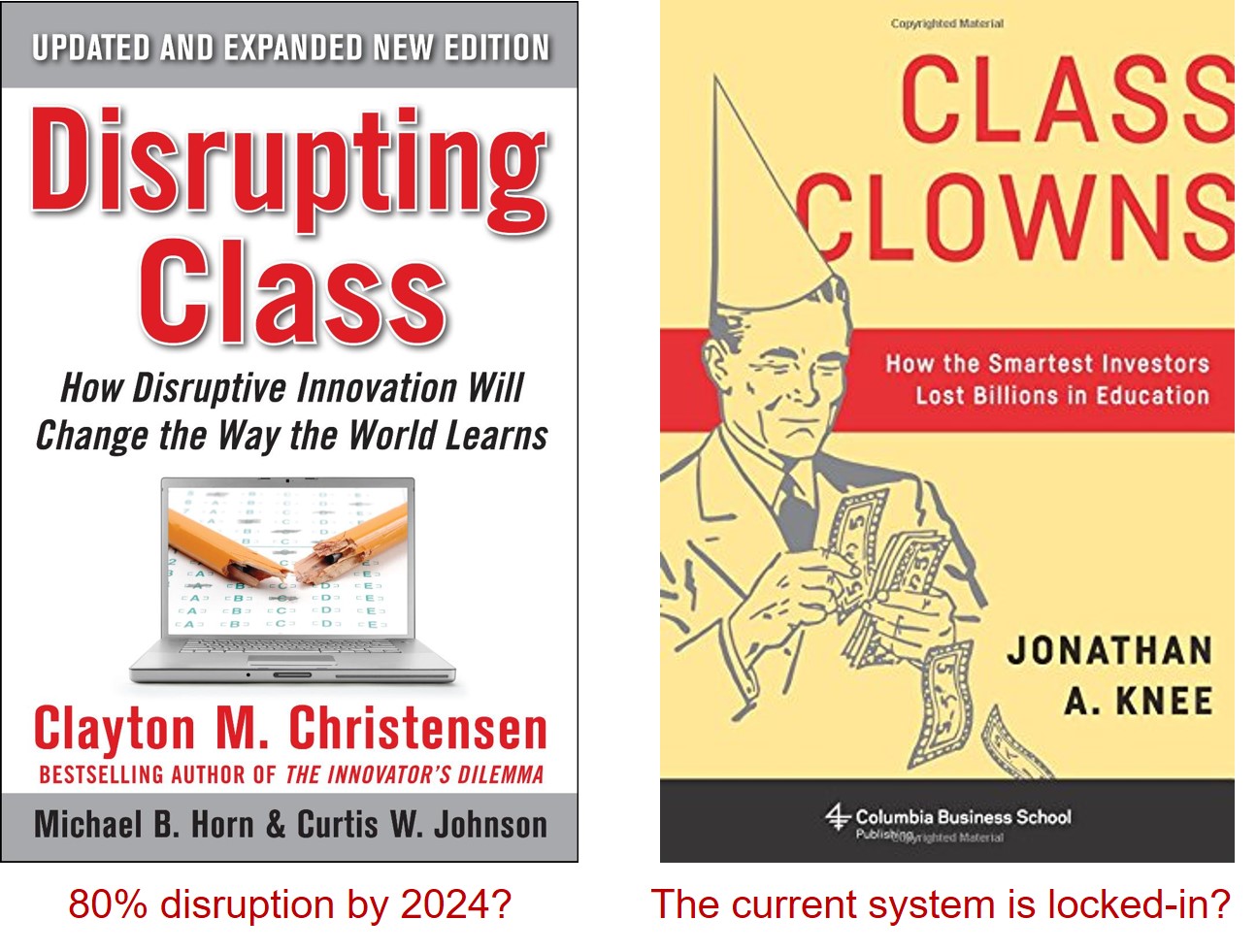
The best part about working with Millennials is their passion to do big things and make a difference. I was working with a number of young teachers this week. Their passion was to innovate in the education sector. The Clay Christensen view of education, if you believe his book Disrupting Class, is that the whole shebang is going to be disrupted in the next 6 years. On the other hand, if you read Class Clowns, it tells a very different story. A story of how many big would-be disruptors have lost billions of dollars in the last decade trying to disrupt education and failing miserably. My take-away from Class Clowns is that the whole system is locked-in.

Tell passionate change-agent Millennial educators the Christensen story and they rub their hands with glee. Tell them the Class Clown locked-in scenario story and they get quite depressed. How do you make a difference if the system proves to be impossible to change?
Well, one answer, is that you keep chipping away at as many of the problems as you can until you find a way through the maze. The other answer – the (Nomad) pragmatist’s answer – is that if you’re an innovator a certain amount of banging-your-head-a-brick-wall is a prerequisite, but you should only do it for so long before allowing yourself to wonder whether there might be some other, easier, walls to knock down somewhere else.
Then came my flash-of-the-blinding-obvious moment. This desire to not bang your head against brick walls leads to a significant winner-takes-all bifurcation: innovators sooner or later all migrate to organisations (or industries) that are good at innovation. The converse of which is that organisations (or industries – like education) that aren’t good at innovation become even less likely to be able to innovate in the future, because all the innovators have migrated elsewhere.
Innovation Capability Level 4 enterprises are progressively more likely to evolve to Level 5; Level 1 enterprises are progressively more likely to stay stalled at Level 1. The good get better; the bad get worse…
…until, the bad get so bad they either collapse, and/or, more likely – thanks Clay – eventually get disrupted by the good. And so, per the trend, the winner takes it all.
Which, if I apply this to my Millennial teacher friends, means the best way for them to make the difference they’re so desperate to make, is to leave the current education system and go work for one of the enterprises that do innovation well. Then, if they still want to make a difference in the education sector, the only other thing they need to do is choose an innovator that will sooner or later become one of Christensen’s predicting Class disruptors. It might take a bit longer to get there, but it’s a strategy that will get there. The shortest path between two points is rarely a straight line in innovation world. Winner takes all…
…until, of coure, the natural law of the meta S-curve kicks in. Innovators like innovating. Enterprises need innovation, but they also need operational excellence and the proper execution of the mundane day-to-day business. When the balance between operational excellence and innovation tips in the wrong direction, that’s when the trouble starts again, and a different winner takes all.
